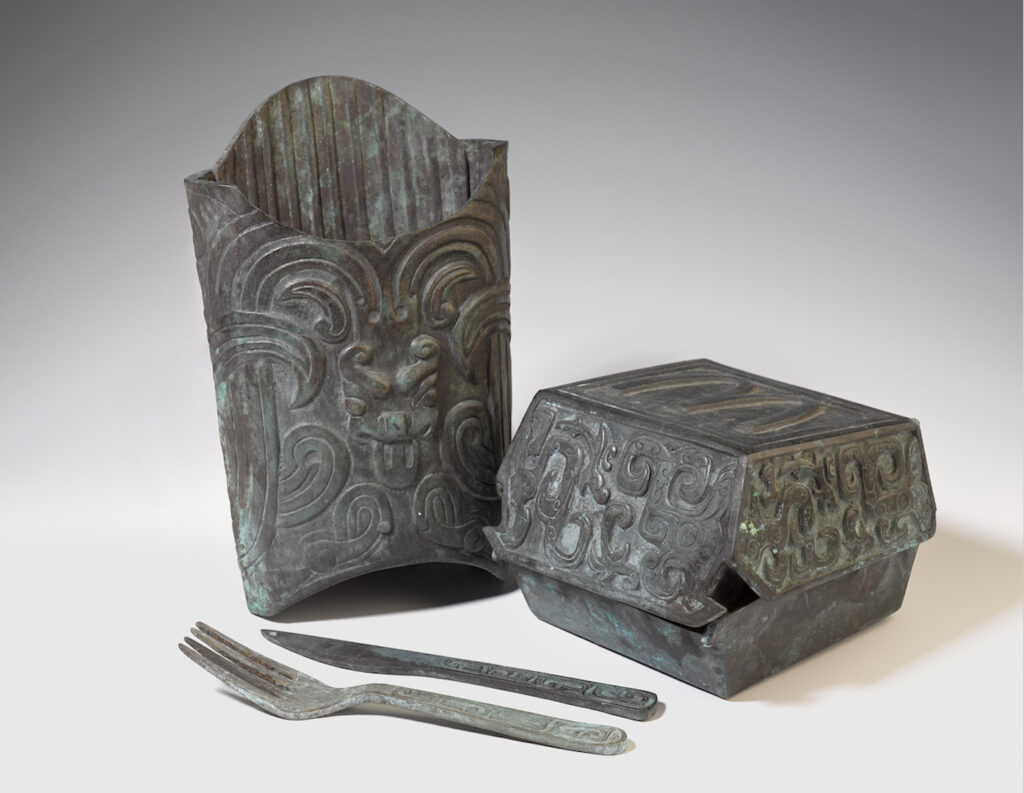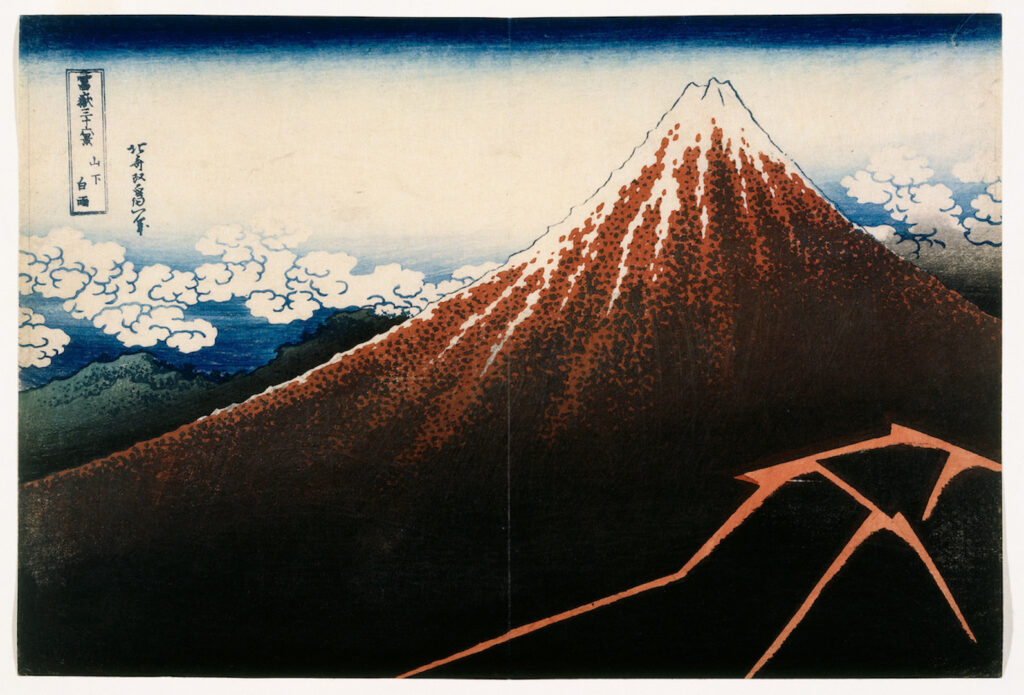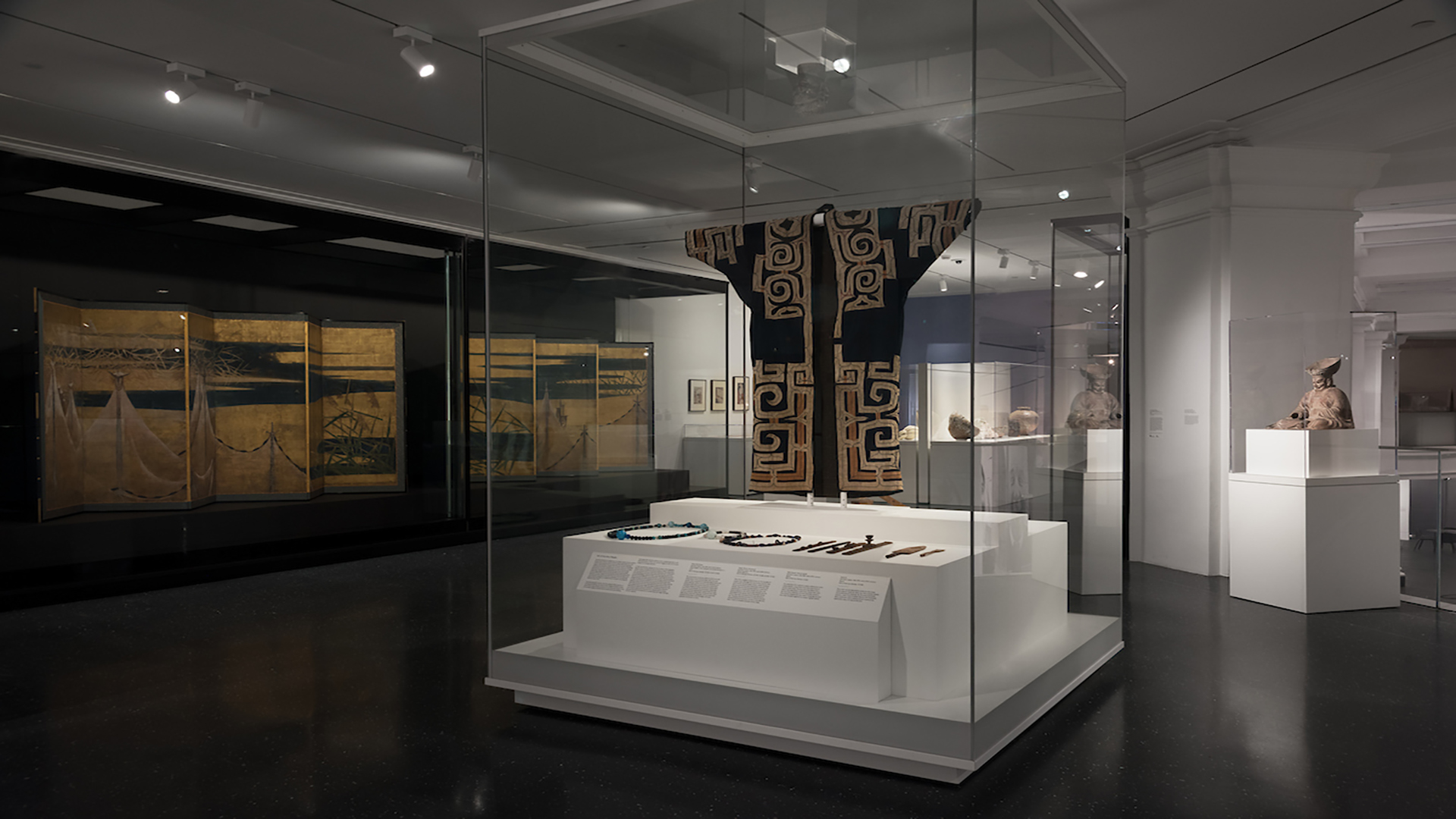In 1824, the Revolutionary War hero General Lafayette laid the cornerstone to the Brooklyn Apprentices’ Library, which evolved over a 200 year period to become the Brooklyn Museum. One of its early librarians was Walt Whitman and the great poet’s words are celebrated at the entrance to the museum’s thoroughly renovated Arts of China and Japan Galleries — albeit reimagined by contemporary Chinese artist Xu Bing in a specially commissioned work.
Museum renovations typically signify an expansion, but for the Brooklyn Museum the emphasis rests on paring down offerings to engage school-children, teens, and the generation of millennials synonymous with the borough. The Japanese gallery is smaller than the one that closed to the public six years ago (to be rotated every six to nine months) and many of the Chinese works are presented in the round, an unlikely choice were volume a priority.
But the true masterstroke is the playful, curatorial humor. The tone is set by Xu Bing’s opener, Crossing Brooklyn Ferry, Walt Whitman, a tricksy work of “square word calligraphy” in which Chinese characters dissolve upon close inspection, revealing tightly-packed English letters spelling out the poem’s first stanza. Inside, Zhang Honglu’s bronze Big Mac box and french-fries container linger like a Banksy prank in a case of two-thousand-year-old food vessels. A Yuan dynasty wine jar featuring eight immortals is explained through Marvel comic-esque superpowers — and yes, there are accompanying trading cards. The aim is to arrest the attention of millennials away from their iPhones and bring primary school syllabi to life by juxtaposing old and new.

Zhang Honglu’s “Mai Dang Lao” (McDonald’s) was a gift of the artist. Image: Brooklyn Museum
The changes are also architectural. Walls have been removed giving the galleries a dose of much-needed light, while also offering glimpses of the exhibits from the sky bridge below. With support from the City of New York, a modern climate control system has been installed within the 100-year old building and though ducts and vents may seem like unglamorous minutiae, they offer the Brooklyn Museum new possibilities. Curators Susan L. Beningson and Joan Cummins can now display artwork long sequestered in the subterranean stacks for fear of light and moisture damage. One such example is a pair of 16th century Japanese screen paintings — withheld for more than a decade at the explicit request of Japanese restorers — which now glow from behind ‘the Maserati of museum cases’, as one curator put it.
Arts of China and Japan has been integrated into the museum with the flow of foot traffic in mind. “The [rebuilt] staircase from the main hall draws visitors upwards,” said Cummins at the opening. “This makes us one of the few museums in the United States to place non-Western art in a prominent position.” With costume, contemporary sculpture, furniture, stoneware, and scroll paintings on display, those who unwittingly find themselves in the galleries have a range of entry points to engage with one of the foremost East Asian art collections in America.

The Brooklyn Museum’s newly conceived Japanese galleries features traditional and contemporary painting. Image: Brooklyn Museum
The Brooklyn Museum’s redevelopment doesn’t stop here. Having opened of Arts of Korea in 2016, the overhaul will duly turn to the Islamic world, South Asia, and the Himalayas— though, after the rigors of this most recent undertaking, curators are coy about announcing dates. “This is phase two of our multiyear project to completely renovate and reconceptualize the second floor,” said Cummins. “We have much more work to do, but today’s renovations are a step in the right direction.”
In all likelihood, Walt Whitman wouldn’t recognize the Brooklyn Museum’s classical edifice that towers over Eastern Parkway. But for a man who poetically captured the rich diversity of immigrants crossing by ferry to Manhattan, he’d find resonance in a museum that relentlessly strives to showcase global cultures to the residents of Brooklyn and beyond.



